Lots of people – in the wider Molteno clan and among my friends – have encouraged me down the years and been interested in my family history project. Marion, in particular, has been wonderful in listening to my stories and getting to know the ‘who’s who’ of the family in times past. And cousins – Fiona Lorimer and Margaret Gibbs in the forefront! – have been endlessly patient over a project that for many years seemed never likely to produce anything people could actually see and read. However, a few people – often close friends – just ‘don’t get it’. It puzzles them that I have spent such huge amounts of time ferreting out information, expanding the family tree, collecting reminiscences, scanning photographs, and learning how to build this website. Why be so interested in the lives and doings of relatives from a century or two ago? Am I not just engaged in a nostalgic trip into some romanticized past? What possible relevance can it all have for us today?
Social history
This scepticism is understandable. And it forces me to think about these questions myself. Of course, whether the lives you read about on this website, and the stories told, are interesting can only be judged by each individual. For my part, I am convinced of the worthwhileness of making them available. Writing history is often very like detective work. An intriguing quest in itself. And while there may not be a crime to solve at the end of each story, there are glimpses into people’s lives – their everyday experiences, sometimes comic, occasionally tragic. And we are connected with them because they are our forebears, our relations. Social history is the story of how people actually used to live their lives.
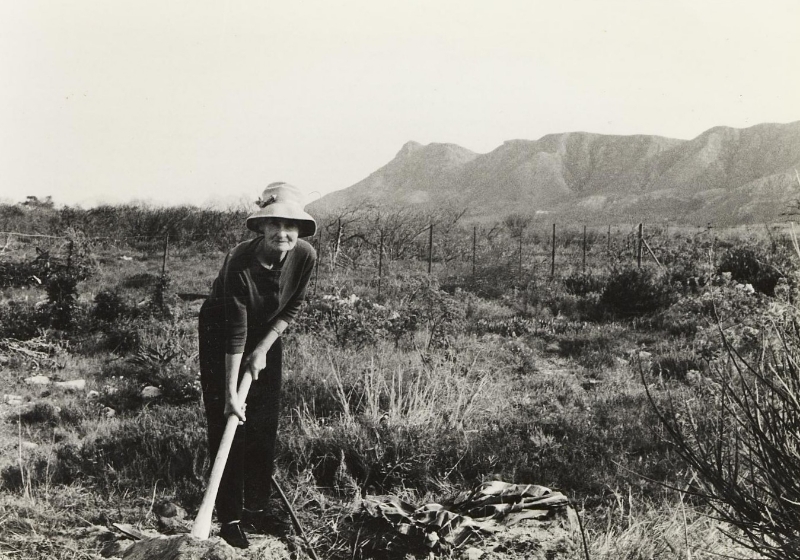
Carol Williamson (nee Molteno) at work hoeing in the veld, c. 1940s
It is every bit as important as political history or economic history. Indeed the latter are built on the fabric of ordinary people’s ways of life, what they believed, and their attitudes. Through learning about how members of the Molteno family lived over the past two centuries, we get insights into very texture of life in Britain as well as Africa in the 19th and early part of the 20th centuries. And from the minutiae of these individuals’ lives comes a sense of the big picture – poverty, migration, religious beliefs, social mobility, war, the impact of education, struggles for human rights (women’s rights, the rights of peoples to self-rule, and the right not to be judged by the colour of one’s skin have all figured largely in our family’s story).
Some remarkable people
The second reason why I feel this project is worthwhile is that I keep coming across some very wonderful and remarkable people in our family. Most of us are not blessed with the self-confidence, energy, or insight to make our public mark on the times we live in. But we are all affected by those who do. And in our family there have been a small number of such courageous individuals who can act as an inspiration to us today. Two groups of our relations, in particular, attracted me. There have been certain women in the family who lived their lives in commitment, with passion, and with a courageous determination not to stand by in silence at the injustices around them. John Charles Molteno’s eldest daughter, Betty Molteno, is one example. So was her sister, Caroline Murray,
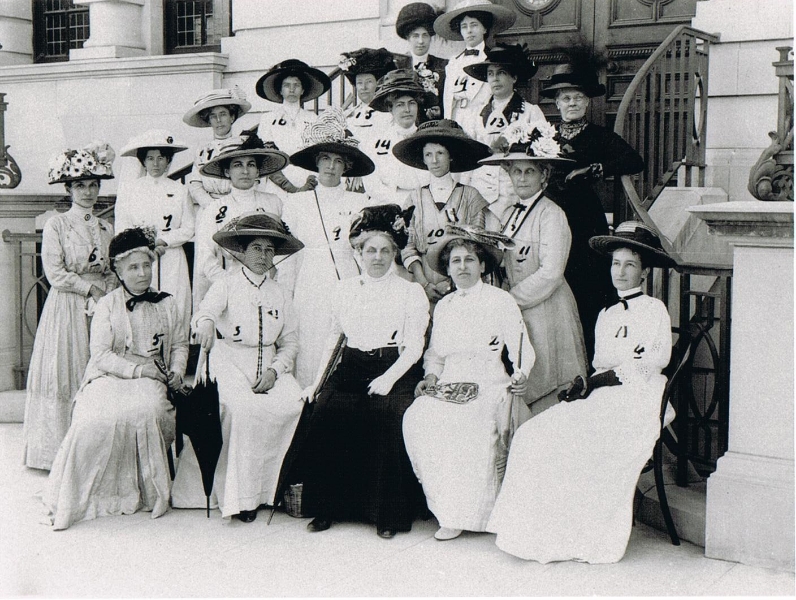
Caroline Murray (2nd row, extreme right) at Women’s Enfranchisement Association meeting, Durban 1911
and Caroline’s daughter, May Murray Parker. And there have been a number of equally remarkable men in the family also. John Charles Molteno himself and at least two of his sons, Percy and his younger brother James. And in the next generation, my own father, Donald Molteno. I want to tell their stories. And I am confident that, when I do so, even the sceptics will see why I have thrown so much time and energy into this family history.
Connecting the family today
The last reason why I have always wanted to pursue this project is very different. A century ago, a cousin of my father’s, Kathleen Murray (May’s younger sister), described our family as like a banyan tree. By this she meant something very old, with many branches, and expanding always with the passage of time.
This particular family resembles in some respects the famous Banyan Tree
‘This particular family resembles in some respects the famous Banyan Tree, its branches are ever spreading, dipping down and taking root, ever expanding and perchance affording sleep and shelter to weaker fellow mortals who are also fighting the great battle of life. Already its aunts, cousins, brothers, and daughters-in-law are fairly numerous; some of them are losing touch with each other, some are scattered abroad, some in Great Britain and others elsewhere, some occupy prominent public positions, some are engaged in helping the Great British Stock onwards in the cause of Freedom, and whilst all are engaged in work, all are agreed that work in some form or other is the most blessed privilege of man – yet it is quite apparent that hardly any two members of the family quite see eye to eye as to the method in which any particular work should be done. This divergency of opinion is not to be deprecated but welcomed, betokening as it does that all are engaged in seeking after that rare jewel, “The Truth”, the very search for which will contribute a breadth of view which must in the long run lead to consideration and sympathy for others. Now it seems a great pity that the family influence should not permeate all its members merely for want of a medium to convey the record of “things attempted, things done”. Furthermore what is larger benefit still, it will be the means of preventing the younger members growing up strangers to each other. If, then, this family magazine strengthens the links that bind the family together, and, mayhap, permits a more united effort to be made towards solving any of the present day problems, then indeed the advent of a “Family Magazine” will have been ennobled and justified.’ (Chronicle of the Family, Vol 1 No 1 April 1913 pp 1,2)
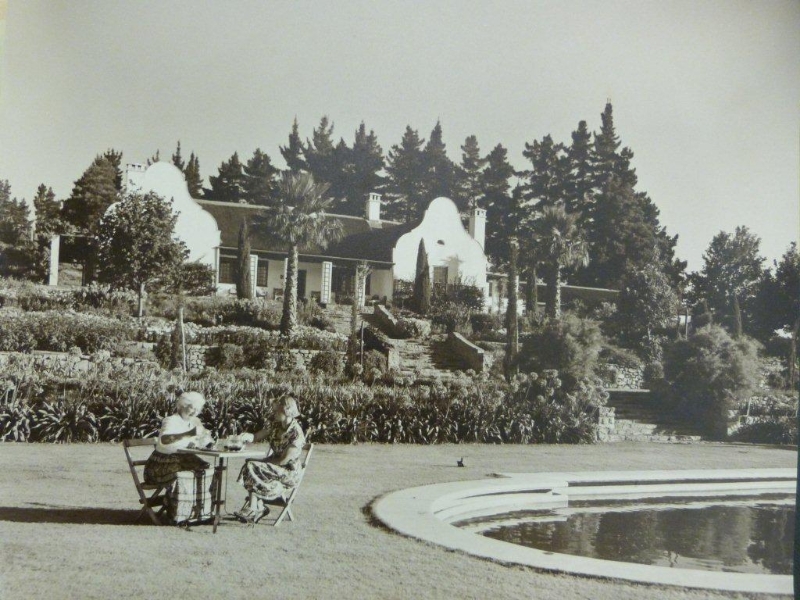
Kathleen Murray (left) in her garden at Palmiet River farm, Elgin, 1960s
Today, I have the good fortune to be in touch with many family members. Most of them do not know one another, or even of the existence of their cousins in the same country, or even the same city, as themselves. In many societies, and certainly in previous eras, being part of a particular family was the anchor of a person’s identity, a source of their security, and the taproot of the values they held. Being a member of a family was the first building block of being part of a community. In the 21st century today, software like Facebook and Twitter make it possible for us to be connected to almost everybody! But the price we pay can be the loss of that deeper connectedness with a smaller community of people who share a personal history, namely our families. To nurture this connectedness in our own Molteno-Murray family in the present day is a large part of the purpose of this website.
My own motivation
All this are ‘reasons’ why I think building this family history is worthwhile. But I have a personal story too. It is of no great interest and I will refrain from telling the details. I will only say that I grew up greatly admiring and loving two people in the Molteno family. The first was my own father, Donald Molteno. He lived an unhappy life – both his parents died when he was a young man. He suffered from tension and depression all his life. He got divorced. And he lived through appalling times – the Great Depression; the rise of Nazism and Fascism; and the century-long march of Afrikaner nationalism which built itself on the rejection and subordination of all their fellow South Africans. Dad refused to bow the knee.
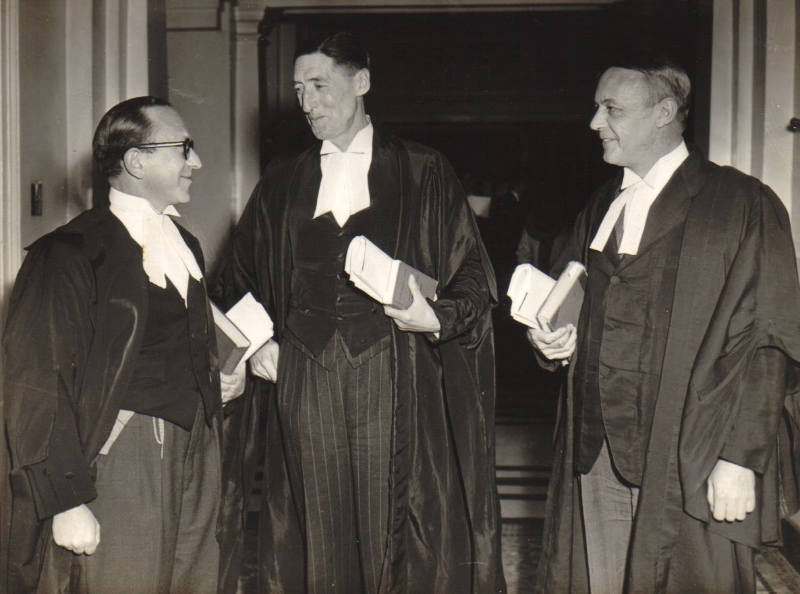
Donald Molteno (right) w. Graeme Duncan Q.C. and Harold Snitcher Q.C, during the famous constitutional vote cases, mid 1950s
He worked all his life with a tiny band of fellow South Africans to resist this brutal apartheid. And for it he was honoured in a small circle in the African National Congress, the (mainly white) Liberal and Progressive Parties, and tiny organizations like the South African Institute of Race Relations (very different then from today), the Black Sash and the Civil Rights League. The second person I greatly admired was my elderly Cousin May. A lifelong Quaker, quiet and gentle of manner, but with a personal aura and strength.
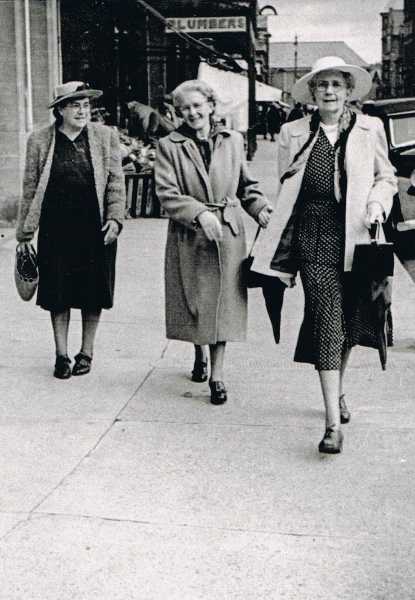
May Murray Parker (right) with Lily Jenkins (centre) & Rose (Lily’s sister), 1960s
She defied the security forces, for example, when the apartheid regime threw a ring of steel round the townships of Langa and Nyanga (outside Cape Town) and she drove in with supplies and hope to see her friends within. And she persuaded her sister, Kathleen, to hide on her farm two amazing left-wing South Africans, Ray Alexander and Jack Simons, during the regime’s crackdown in 1960. Wanting people to know about these two relations has been the quiet driver of my determination to tell the story of our family. The strange thing is that I grew up in South Africa largely out of touch with my wider family. My father was a shy man, and always consumed by his legal and political work. Apart from Christmas with our cousins, the Morrises and the Symes, and Cousin Kathleen’s glorious Christmas gathering at Elgin, I knew very few relations. My father never took us to the Karoo to see the farm where he had grown up. He never talked to me about the family. And being young, of course, I asked no questions. How I regret not doing so now! Then I left South Africa at the age of 22, not realizing I would not return to live there. The regime removed my passport when I was working in newly independent Zambia, and for over 20 years I was unable to visit the country. There is no doubt that this forced separation from the place where I grew up and the people I knew created an emotional void in me. And it has powerfully motivated me to reconnect and recover a sense of lost community by ‘discovering’ the history of the family. Since the early 1990s when I was able to visit South Africa again, I have been constantly overwhelmed by the warmth with which family members have welcomed me in. This website is in one sense a belated ‘thank you’ to all of them for their kindness.
The protracted process of undertaking this family history
Enough of all this explanation! I will end with a word or two about process, how I went about uncovering the history of the family. The big breakthrough was a two month sabbatical that the publisher, Zed Books, where I was the Commissioning Editor for so many years, granted me in 1996. I spent it in Cape Town working in the archives of the University of Cape Town Library. I began to explore the huge collection of family papers stored there. And I returned to Britain with a chaotic treasure trove of notes and photocopies, only to be sucked into the overly busy and burdensome job of running Zed’s editorial programme. I did some further family research back in England, notably going through the (at that time) undigitized Births, Marriages and Deaths public records (from 1837), and getting in touch with a growing number of distant cousins. But somehow the years slipped by and I had neither the time nor self-discipline to pull all the disparate materials together and write them up. Throughout, I was always conscious of disappointing my older relations who really wanted me to write a book about the family. Then at last came retirement, but with it new activities that continued to divert me from the task in hand. Only in early 2012 did I decide at last to make this family history my main priority. Then a new dilemma opened up! How could a book do justice to the sheer quantity of material I had collected? In particular, to the number and length of reminiscences, diaries and autobiographical fragments written by various relations? I concluded there was only one solution. Build a website! That way, there would be little limit to the length of materials I could make available. Or to the number of family photos that could be visible. What’s more, instead of having to labour away and write a whole book in its entirety before it could be published and made available, a website has the supreme advantage that I can add to it incrementally. So what you have here is the beginning of our family history, not its totality. Building a website, of course, is easier said than done! Particularly for someone like me who feels my blood pressure rising uncontrollably as my laptop or new software throw contant ‘wobblies’ in my path! Only yesterday, as I was putting a photo into one document, the software somehow created two images. As I dragged the photo to its proper place in the text, the esteemed relative’s hat rose mysteriously from his head and I had an image of him wearing his hat, but with a copy of the same hat floating mysteriously some inches above him as though it were a scene from some rather sinister séance! So where are we at today? The website, as you can see, exists, at least in part. I am prioritising putting on the writings of members of the family who are no longer alive. These are often 20 or 30,000 words in length, and sometimes even longer. Each piece has involved a vast amount of work – dictating or scanning it; proofreading it; selecting extracts to put on the website; writing an Introduction so that younger members of the family can have some idea of what they were about to read; and putting in Endnotes to explain things that today – 50, a 100 or even more years after they were written – might not be immediately comprehensible. And finally, finding photos and inserting them. This job will be largely complete by September 2013. Then I intend to get down to writing stories and other pieces to fill in the gaps about particular members of the family as well as branches of the family that have left little documentary trace.
Will there ever be an actual book about the history of the family?
What of the original idea of having a book which would tell the story of the family in one neat place? And that one can hold in one’s hands and read with pleasure? After all, reading long pieces on a website requires some dedication, as well as technical competence! Dangerous to make promises, I know, but it is my intention, once I have finished the website, to take extracts, make a selection from the over 1,000 photos that are already up, and produce an actual book! Assuming that books have not gone the way of all flesh (or at least Gutenberg) by that time!!
Robert Molteno
June 2013

Hello from Kalk Bay Robert. Hope all is well and congratulations on the website which has reached another level since I last looked at it.
I’m researching another part of Kalk Bay now and found Ernest Deane Anderson had inherited a house from a spinster – Lily Hanbury. I thought I might find a connection but instead found Ernest’s account of his banquet with the King. Wonderful
All good wishes Steve Herbert
Dear Steve, Robert sadly passed away in 2022 so would not have seen your recent comment. A few of us (his nieces and nephews) are trying to keep his website going, but are all working full time so apologies for our slow response.